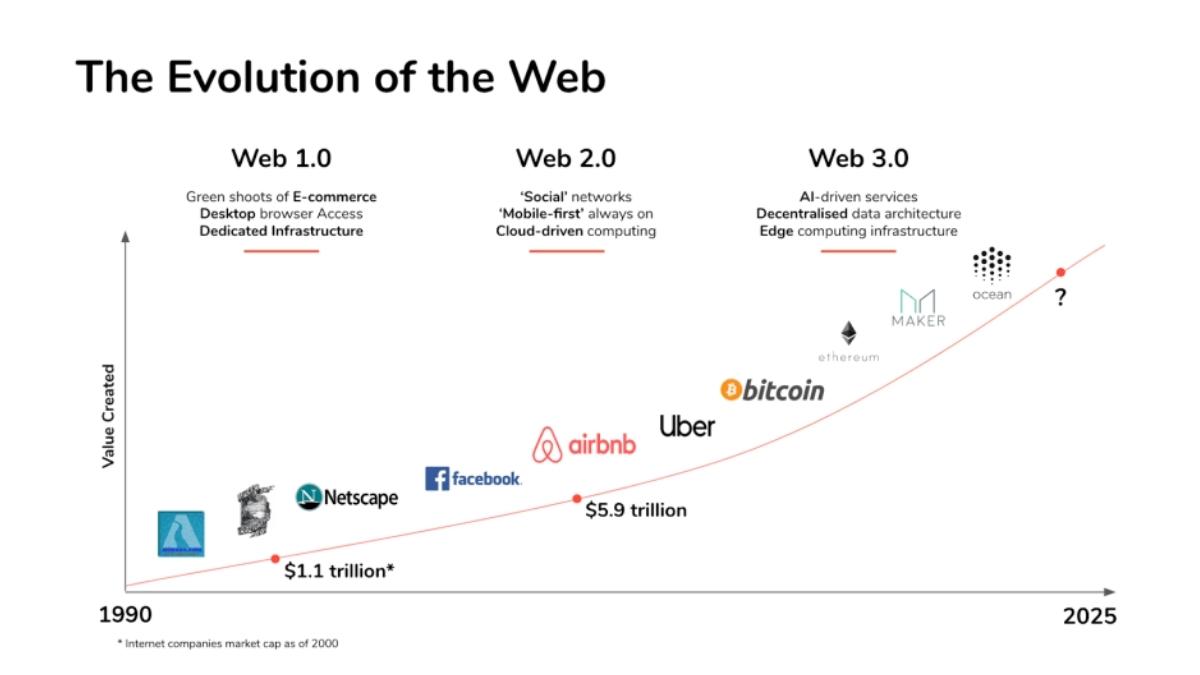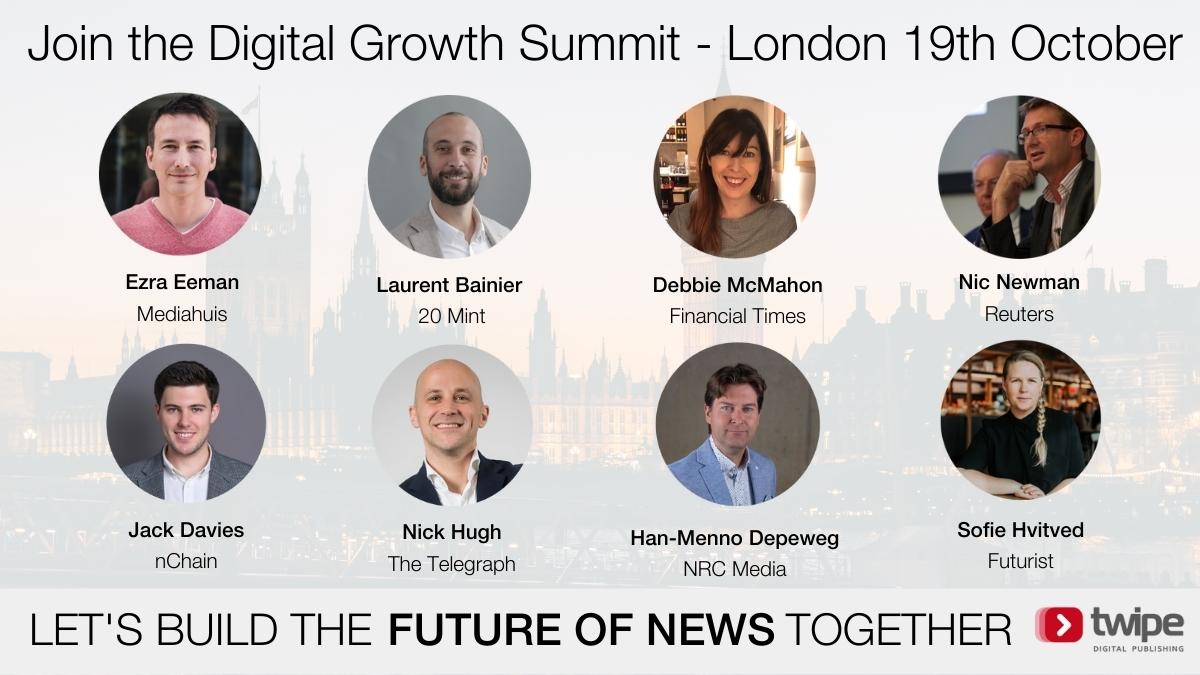In January, we comprehensively covered what the Metaverse could mean for publishers. Since then, the fascination surrounding the shift towards future technologies has only increased. As many industries are starting to appreciate the benefits of virtual-world immersion, publishers appear to be taking the lead.
Last week, we wrote about web3 potential for publishers, and this week in our series dedicated to Future Technologies co-written with Manuel Bolognesi, we dive into what long term potential there is for publishers using AR and VR technologies and in the Metaverse.
What is the long term potential for publishers with Web3?
More publishers are getting their hands dirty with the new “realities” of Web3. So, we explore what Web3’s long term potential for news publishers. Read now.
Metaverse, AR, VR: What are they?
The Metaverse previously referred to the connection of virtual and interactive lands (achieved in virtual worlds like “Second Life” and “Decentraland”). Following advances in technology however, the Metaverse can now be seen as a shift to the future (and not yet existent) convergence of all sectors of virtual and human interaction.
AR, or Augmented Reality, is the provision of an experience when real-life environments are enhanced with computer generated inputs. Think Pokemon-Go when people would roam the streets looking for Pokemon on their phone. Think IKEA letting you visualise that new sofa in your living room on your phone.
VR, or Virtual Reality, on the other hand is a fully computer generated environment with objects and surroundings which make the user feel as though they are immersed in their surroundings. VR experiences are generally made through the use of headsets. Think people walking around in ski goggle like headsets waving remotes to touch virtual objects (as demonstrated in our offices below)!

How are publishers experimenting with virtual immersion?
Virtual-world platforms provide a great canvas for immersive and interactive storytelling through VR and AR. Publishers have experimented with these tools in a bid to attract younger audiences. The Guardian launched their 6×9 project where they allowed readers to virtually enter a US jail to experience life in a 6×9 cell. Through a VR App and a 360-degree video on YouTube, users could immerse themselves in a full virtual experience. The project was mostly created through the cross-platform game engine Unity using computer-generated imagery (CGI). Experience the project for yourself in the video below.
With over 800,000 views, the experiment was well interacted with. Discussing the project, The Guardian‘s former Multimedia Special Projects Editor Francesca Panetta explained that for the future, “some of the pieces I’ve seen that suit virtual reality best are where the environment, the location is really important“.
Through a multi-year partnership with Facebook (Meta), The New York Times launched an AR lab of more than a dozen employees. The lab has been working with a dedicated newsroom team on the development of AR effects using Facebook’s Spark AR software. They have used AR Instagram filters with some articles for purposes like showing how specific COVID19 facemasks can block the diffusion of the virus. The filters interactively displayed how the fibres of the respirator can block aerosols and prevent infection.
We knew this medium had a lot of potential, but nobody had used it for journalistic storytelling
Karthik Patanjali, Graphics Editor for Special Projects, The New York Times
Open your phone’s camera and try it out for yourself through the QR code below!

Experiments with AR have also been used to bring print media to the next level. These experiments have enabled readers to see video content, 3D animation, or other interactive hidden content through mobile devices. Both The Metro and Burnaby NOW, have allowed the scanning of physical newspapers to load hidden digital content that replaces a section of an article.
The technology’s finally there to bring print to life
Alvin Brouwer, President of Lower Mainland Publishing, Glacier Media
Jess Butcher, Co-Founder/CMO of Blippar, the team used by Metro, explained that “By adding this fun, interactive layer, we hope to not only help reinvigorate print, but also maximize the advertising opportunities in newspapers and magazines as well“.This is the beginning of a digital journey for many traditional print users and it allows them to see the future potential of digital.
More recently, Billboard Magazine introduced an AR experience powered by Snap Inc to promote Lollapalooza music festival. Snap’s Arcadia creative studio allowed users to scan the cover of Billboard to see an animation of an unfolding a map of the festival and reporting all the key locations of the stages within it. Speaking about the idea behind the project, Jeff Miller, Snap Arcadia General Manager added that “It’s one thing to read the story though and another to experience it firsthand”. This collaboration is a future glimpse of the widespread appeal and potential of publishers to reach new audiences.
What are the long term opportunities of virtual immersion for publishers?
Whilst the experiments above are great examples of previous publishing experiments, there are many future possibilities for publishers.
New leap into digital and immersive storytelling?
As 360-degree videos, interactive AR and VR experiences, and immersive sounds begin to populate the publishing industry, there is huge potential to get readers, particularly the younger generations, more interested in news. AR asks audiences to physically interact with the content to grasp its message. In the future, the messages and stories of today will likely develop a further focus on reader feelings and impersonation.
Generating immersive and interactive stories can add a new dimension to stories. Publishers could use these to place the reader at the scene of the story and experience the news firsthand. Why not let them see the extent of forest fires across the world to really hit home, or more positive things like the launch of a new film.
Augmented Reality could take local journalism to the next level. Publishers can encourage readers to get out in their local community and interact with others around their town. There is truly a role for these technologies to play in boosting engagement with publishers and giving journalism a new lease of life.
Are we finally entering the realm of premium ads?
Enhanced reader engagement may also extend to advertising. In November 2021, Volkswagen launched Augmented Reality ads embedded on QR codes. Users could take a virtual drive on a 3D map, add sounds along the way, and record the drives. As a reward, users unlocked 3 free months of Amazon Music Unlimited. Rewarding users for the experience is a way of enriching users and getting them to spread positive brand images and publishers can here learn from the Volkswagen case. There is huge potential for publishers to reboot their advertising revenue and create new and unique relationships with partners.

3D Design – the new skill set needed for publishers?
There is no denying, publishing lagged behind in the shift to digital. Publishers had no digital skills, but to keep up and avoid being totally dominated by tech giants, they got them quick. Now is the time for publisher to act: they can’t get left behind again.
For decades, publishers have leveraged the habit forming power of puzzles and gamification. Publishers must now take these experiences to the next level. Adding game engines to their graphic creation skills could be a great place to start. This would allow publishers to learn quickly and become the hub for new gaming experiences for users. Habits could be taken to the next level and news publishers could be the trend setters.
Publishers tend to have skills in video, audio and content, but there is a long way to go until they have 3D graphic design skills and gaming experience. Until now, they have not needed them but they could be crucial to the future of news. Facebook’s Spark AR could play a big role in the future uses of AR within Horizon Worlds, Facebook’s version of the Metaverse. This new skillset publishers will need to attract and develop includes experience with: Unity, Spark AR, Unreal Engine and programs of 3D creation and animation. Will publishers look to bring these skills in house and develop or will they go external?
Comments and engagement alive in the Metaverse?
As people from different parts of the world will start forming a new layer of existence in the metaverse news is likely to be enriched by a new layer of communication. This is a layer that can be highly enlightening, considering the possible different real-life backgrounds of readers. Through discussion, users may become more interested in news from across the world and want to be in the know to present a positive perception of their avatars.
Publishers can leverage this reach further. Have you ever wondered what it would be like to discuss an article with its author? How about discussing its content with a culturally diverse group of people of different ages, in the environment portrayed by the article? Publishers could setup homes in the metaverse to facilitate these discussions and reap the rewards of this new exposure.
What threats and limitations are seen with AR, VR and the Metaverse?
Like with any technological advancement, there are threats and limitations seen with AR, VR and the Metaverse.
The number one risk with all of these news immersive technologies is the threat posed by fake news. Through AR and VR, fake news may feel more engaging and impactful. In the metaverse, we have already seen examples of fake news being spread. Worrisome misinformation on COVID19 vaccines spread from a metaverse robot during the pandemic.
Limitations centre around the financing of these projects. Whilst they are new technologies to the market, these projects remain expensive due to limited expertise and expensive technologies. We have seen many experiments take place but not convert due to the cost of turning them into full time ventures. The issue of costs also revolves around consumers. Not all consumers can afford to pay for technology like VR headsets to benefit from these experiments, a reason for the limited interaction some publishers have seen around VR.
Want to know more?
If you’re interested in learning more about these technologies then join us at the Digital Growth Summit. We will hear from Futurist Sofie Hvitved about the potential of these technologies and have many more panel discussions exploring their potential. There will also be chance to experiment with these technologies to see their potential for yourself.
For immediate continued learning, we have curated a playlist of metaverse videos to further your knowledge:


